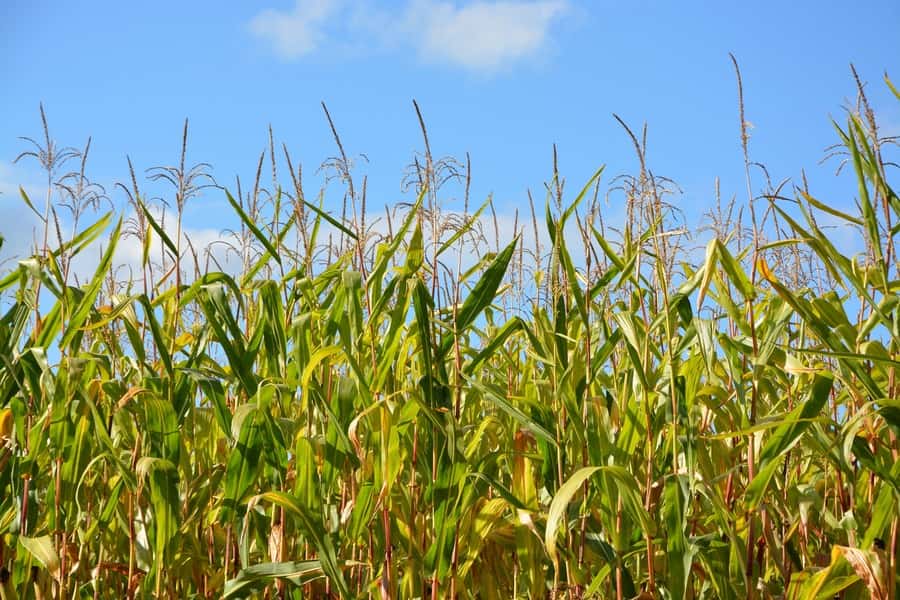Porto Alegre, July 5, 2021 – Brazilian corn suffers another setback in this 2021 second crop. The strong cold wave that hard hit a large part of Brazil last week affected corn crops at different stages, from pre-harvest to pod filling.
It is quite difficult and even irresponsible to define the size of production losses with frosts still in progress, as some institutions did last week. Frost-induced losses are not mathematical, they need to be evaluated a few days after the occurrence, the effects on plants, grains, and, especially, when this corn is reaped and dried. A good portion of crops is already being destined for silage to try to ‘save’ part of production. However, not everything can be destined for this type of consumption. Losses range from quality to grain weight and will be another item to be managed by the market.
We should not forget that the 2021 crop already faced a sixty-day drought in April and May, it already had irreversible losses and was trying to recover with June rainfall. The risk in June would be the arrival of frosts. “Fortunately,” the frosts did happen in early June, which would be really catastrophic. However, a large portion of crops is still at pre-harvest, maturation, and pod-filling stages. In the last week of June, the aggressive cold front that reached a large part of Brazil brought almost unprecedented frosts even to eastern Mato Grosso and southwestern Goiás.
The challenge now is to define the way and how deep plantations were affected. For this, we have some parameters:
– Frosts to the point of damaging crops and production occurred between Paraguay, center-south of Mato Grosso do Sul, south and west of São Paulo, and Paraná.
– Goiás and southern Mato Grosso, due to the crop stage and intensity of the occurrence, the damage seems to be smaller. Basically, quality and productivity due to the stage of crops. But there will be damage. There are reports about heavy losses for sorghum;
– In these risk regions, 10/15% were at pre-harvest, that is, with low moisture, 45/50% at maturation stage with a gradual reduction in moisture, 30/35% in pod-filling phase, and 5/10% in silking, mainly in Mato Grosso do Sul and São Paulo. Only 10/15% of these plantations at harvest stage will suffer nothing from the frosts, perhaps some quality loss;
– The ‘positive’ side is that there is no rain forecast in the very short term, and such crops will not have additional losses;
– For 85% of the second crop, therefore, there will be some damage. Frost-induced losses do not usually occur with mild occurrences, but last week there were intense frosts for three days;
– Losses will occur with grain quality, corn weight after drying, and many crops will have total losses. If plantations are left unreaped for too long, they will end up increasing quality deterioration. Therefore, harvesting now, even with high moisture in grains, will be essential to avoid further damage. However, in this case, the weight loss will be very evident in dryers;
– It is very likely that in the epicenter of the frosts, Paraná, Mato Grosso do Sul, and Paraguay, plants have died, and production is paralyzed at the current stage. The attempt to save some production will be the challenge for the coming few days;
– The center-south of São Paulo has additional losses now with strong frosts. They will not be different from the ones that occurred in Paraná, and the loss of grain weight and quality will impact the final production numbers.
In a preliminary and still superficial assessment, we can predict losses by 4 to 8 mln tons as a result of frosts. If quality is not affected, certainly the average grain weight will, with the possibility of a large portion of crops being destined for silage. Everything will depend on the speed of the harvest, even with very wet corn, which will require more drying time and more discounts over the counter.
The evidence of this picture started already in the middle of the devastating climate picture. Trading companies are once again the point of immediate purchase for some consumers, with deliveries for August onwards. Mato Grosso has become more demanded by the domestic market due to the issue of grain quality.
With the frosts, there will be no normal quality standard in the most affected regions, and the purchase of corn from Mato Grosso is an alternative for the South region and São Paulo. Trading companies started doing business with the west of Paraná at BRL 88, with prices closing the week at BRL 93.50 plus ICMS. The observation is important because if the west of Paraná has looked for this alternative, it is a clear sign that the second crop picture is terrible after the frosts in the state.
The move that the consumer sector needs to take now is to be proactive with imports and the absorption of the second crop. The repurchase of export positions becomes a fundamental point for maintaining supply, not only in the second half of the year but mainly in the first half of 2022. To date, Brazil does not have more than 300 thousand tons purchased from Argentina. With the production losses in Paraguay, it seems essential that the sector accelerates purchases for the second half of Argentine corn before the local government decides to block exports. The US option is more expensive, despite being an alternative only from September. Importing seems to be the unavoidable path for the second half of the year. The other alternative is to increase the use of wheat in feedstuff composition. A viable possibility for the entire second semester in the South region, at least.

